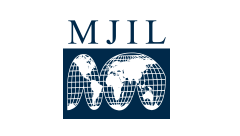Abstract
In May 2006, the government of Jordan was facing a crisis. A small U.S. labor-rights activist group had just released a damning report documenting extensive labor abuses in Jordan’s fledgling garment industry. Adding fuel to the fire, the New York Times published a front-page story about the report with its own field work that corroborated some of the allegations, such as long and abusive working hours, the confiscation of passports of foreign workers, horrendous living conditions, and sexual harassment. Although garment manufacturing was new to Jordan, after just several years of existence it already constituted an important part of Jordan’s total exports, and the country could not afford to lose the industry. Consumers and global activists took note of the report and mobilized to put pressure on companies sourcing from Jordan. The United States government also became involved, because the U.S. market was the primary destination of Jordanian garments and had extensive economic and political ties with the country. What resulted was a two-track strategy pursued by the Jordanian government. On the one hand, Jordan committed to improve its own public institutions of labor law enforcement. On the other, it agreed to implement a novel labor assessment and advising program called Better Work Jordan (BWJ), which operates more or less independently of the Jordanian government and has the participation of many large transnational garment corporations seeking to avoid more exposés of working conditions in their Jordanian supply chains.
Recommended Citation
Kevin Kolben,
Dialogic Labor Regulation in the Global Supply Chain,
36
Mich. J. Int'l L.
425
(2015).
Available at:
https://repository.law.umich.edu/mjil/vol36/iss3/2
Included in
Business Organizations Law Commons, Labor and Employment Law Commons, Transnational Law Commons

